Breeds of Beef Cattle Arabian Horse
Horses are ungulate mammals with elongated heads, muscular torsos, thick necks, long tails and short pilus. Taxonomically, they belong to the family of Equidae. Horses take evolved for more fifty million years with the kickoff horse breeds having originated from Due north America and then spread into Europe and Asia.
Co-ordinate to the Oklahoma State University, the get-go horses were domesticated between 3000 and 4000 B.C generally for meat, pilus, hibernate, os, milk and medicine. They eventually joined the oxen to provide transportation and other services. Apart from the N America, you'll find horses in virtually every country of the world.
Horses are smart, exhibit unique social qualities and live in herds of between three to twenty animals led by a mature male known equally a stallion. The rest are females and their young ones.
Horses and humans interact in several ways including in sporting events and police work. Humans, on the other manus, provide domesticated horses with attending, preparation, shelter, nutrient and water. They give their horses names, and spend their free time taking various horse breeds quizzes and reading horse inspirational quotes. 🙂
Read on to learn almost the xxx about popular horse breeds constitute in the world today. They are presented below in an alphabetical order – horse breeds A to Z.
1. Appaloosa Horse
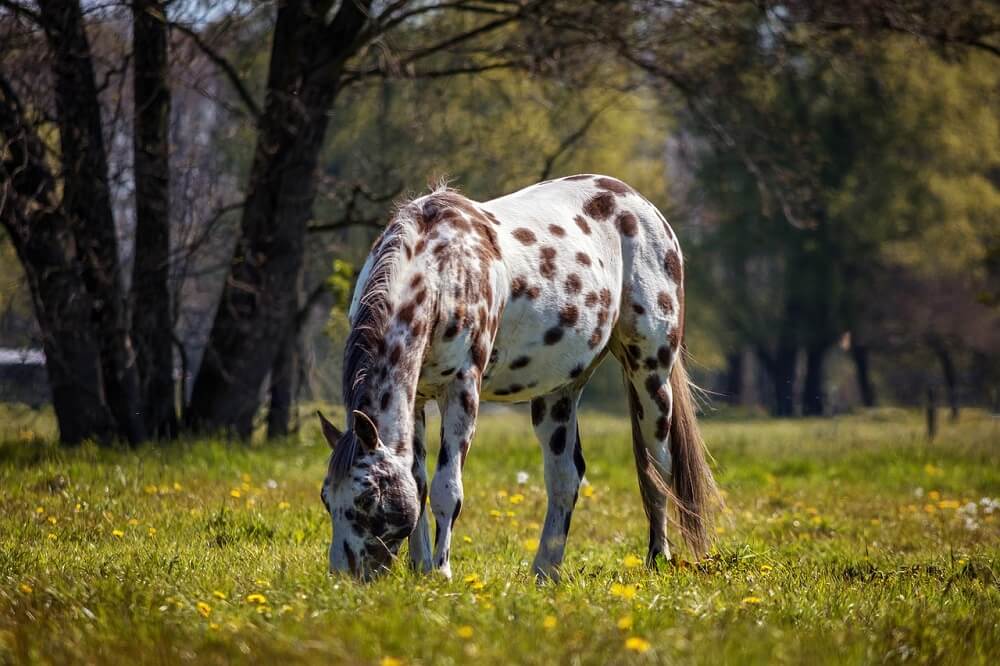
The Appaloosa is an American horse breed, which was cultivated past the Nez Perce Native American tribe in the Pacific Northwest over centuries.
Appaloosa horses accept very distinctive coloring, which differs from nigh other equus caballus breeds (other than the Danish Knabstrupper). It is not only due to their spots but besides very distinctive and visible white sclera.
Appaloosas are also know for an interesting gait pattern, which is known as the Indian Shuffle. These intelligent, independent and curious horses tin be used for both Western and English riding, across various disciplines including endurance and trail riding.
Thanks to the introduction of the Quarter Horse into the brood Appaloosas are besides used for racing.
2. Arabian Equus caballus
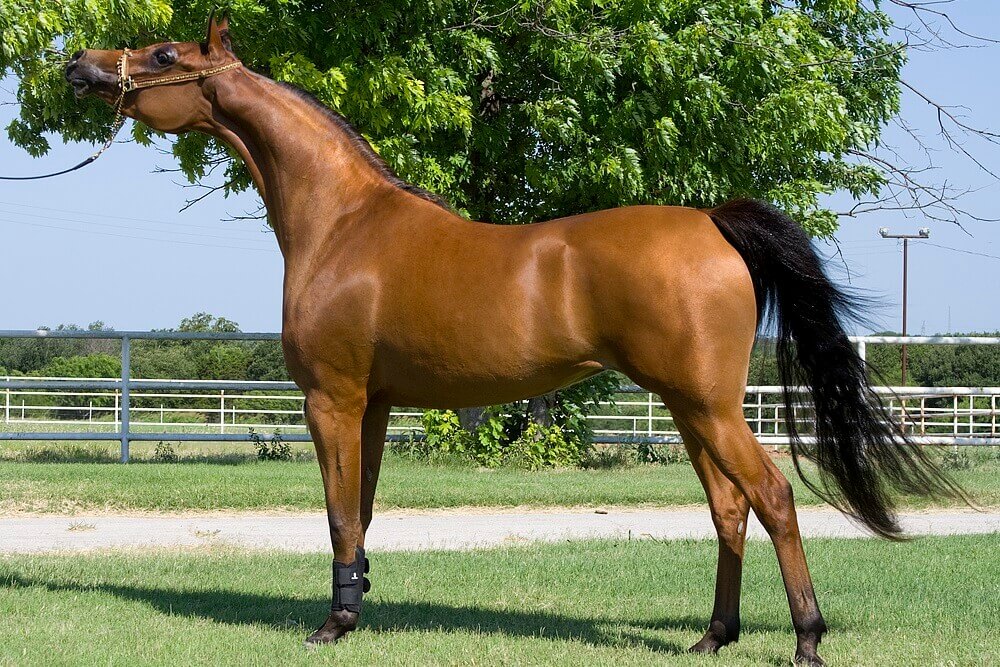
The Arabian horse or Arab horse originated from the Centre East most specifically the Arabian Peninsula. Information technology is among the oldest and near popular breeds dating back to four,500 years ago. It is well known for its arched neck and loftier-carried tail.
Its virtually common colors include anecdote, gray and bay; with black and roan being the least common. All Arabs regardless of their coat color take a nighttime pare to offer them protection from the harsh desert.
The breed has an average superlative of between 57 and 61 inches. Naturally, the Arabians cooperate with humans, simply they can get wild when treated to extreme abuse. Today, these horses are establish all over the world equally a result of trade and war.
They dominate the discipline of endurance horse racing due to their healthy bones and high speed. They are establish in places like Brazil, Continental Europe, Britain, Canada, U.s., Australia, and the Middle East.
3. Ardennes Horse
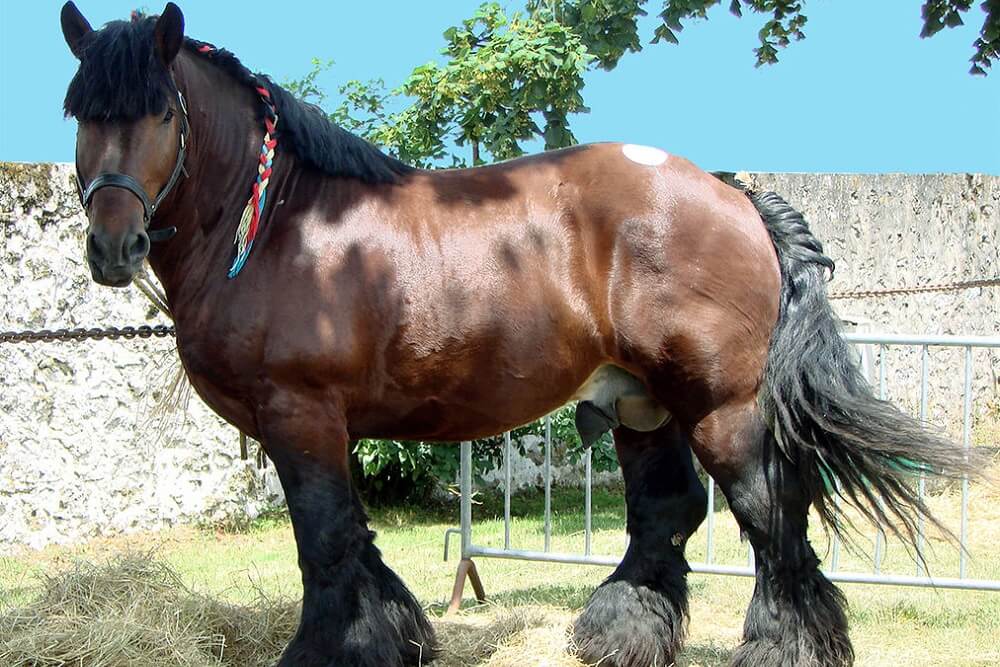
The Ardennes/ Ardennais are among the oldest breeds of the typhoon horse that originated from France and the Ardennes area of Belgium. They date back to Ancient Rome, and although several other breeds have been added, merely the Belgian breed has had an bear upon.
For a long time, the Ardennes has been featured in wars, but today they are used for farming, draft work, driving events and meat.
In France, the Ardennes stallions stand up at about one.62 meters loftier with mares standing at near 1.60 m and weighing between 700 and 1000 kilograms. They take a straight and slightly convex profile with a thick and broad confront.
They are too muscular with a meaty torso, brusk back, sturdy legs and robust joints. The flocks are feathered and come in coats of palomino, grey, chestnut, roan and bay. They are gratis-moving and easy keepers.
4. Belgian Horse
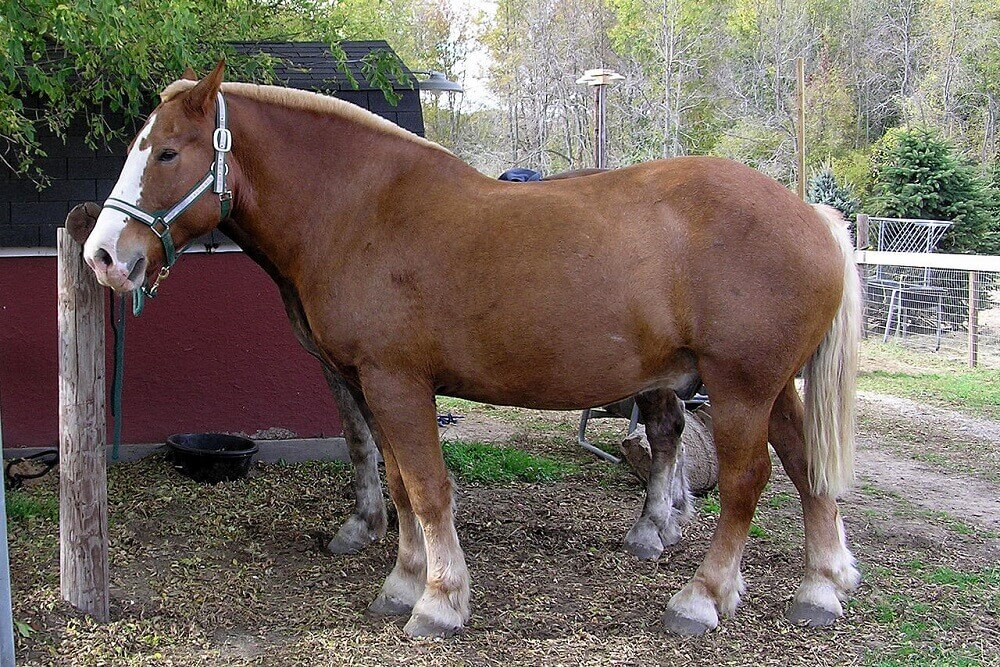
The Belgian horse/ Belgian draft horse/ Belgian Heavy Horse is a draft horse brood originating from Brabant region of the mod day Belgium. It is amidst the strongest horse breeds and stands between 66 and 68 inches.
A mature breed weighs almost 900 kilograms with a relatively small and well-shaped body. The American Belgian is tall with a flaxen mane and a chestnut coat. The ones in Due north America are much smaller than the European ones simply with a similar build.
In some areas, they are kept for meat and are used for pulling heavy weights. This breed has a high occurrence of an inherited genetic disorder called the junctional epidermolysis bullosa. The illness causes the skin of newborns to lose big areas of pare resulting in euthanasia.
They are besides very decumbent to chronic progressive lymphedema like to the ones in humans. The breed has been domesticated as a working beast, but lately, information technology has get a pop show and pleasure equus caballus.
5. Caspian
This picayune equus caballus originated in Northern Iran, though information technology had pretty much faded from public consciousness until it was "rediscovered" in 1965. It has been disputed that the Caspian is really the oldest form of domesticated horse still effectually today, because some horse remains were discovered in Islamic republic of iran that dated dorsum to 3400 BC!
The Caspian is one of the rarest horse breeds around today, but convenance programs are in place, with these diminutive horses oftentimes being crossed with larger breeds like the Thoroughbred, besides as the Welsh breeds.
The Caspian horse is i of the few that is known every bit a horse despite information technology being small – it generally makes betwixt 9 and 11 hands – because information technology shares characteristics of horses in conformation and gait.
These little powerhouses were used traditionally as cart and pack ponies, and the stallions were ofttimes raced, ridden by children. They have a kind and even disposition, and a gentle and honest nature, which makes them perfect for apply as children'south ponies.
They tin can exist suited to just nearly whatsoever subject field from dressage to gymkhana games, and have also been used for light driving.
half-dozen. Clydesdale Horse
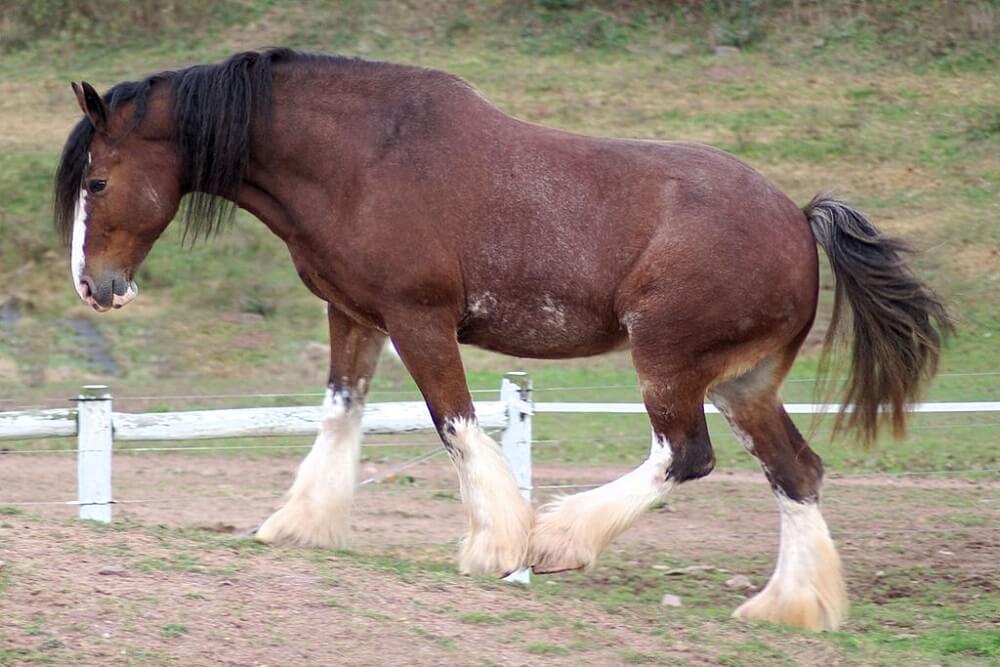
The Clydesdale is a breed of the draft horse originating from Clydesdale, Scotland. It was developed from the Flemish stallions imported to Scotland then cross-bred with local mares. The showtime Clydesdale brood was adult in 1826 and spread throughout Northern England.
Originally, information technology was a smaller brood, but nowadays, information technology features taller breeds. They come in bay coatings and show some white markings due to the presence of sabino genes.
At first the Clydesdale horse was used for haulage and agriculture, but currently, the Budweiser Clydesdales are used as drum horses in Uk. They stand between 64 and 72 inches and weigh about 910 kilograms, although mature males are much bigger.
The horses feature a slightly convex or straight facial shape with a wide muzzle and wide forehead. They are muscular and strong with an biconvex cervix, clopped shoulder and loftier withers. They have powerful gaits and lifted hooves exuding energy and ability.
As with the Belgian horses, the Clydesdales have also been identified to be at high risk for chronic progressive lymphedema.
7. Dutch Warmblood

A Dutch Warmblood is a type of warm-blooded horse developed through a convenance program that started in the 1960s in Netherlands. This brood is among the most successful horse breeds bred in the postal service-war Europe. Well-nigh Dutch Warmbloods have white marking and come up in gray, chestnut, bay, brown and black coatings.
This Dutch brood features long legs but with a smooth topline and expressive head. The Dutch Warmblood is built uphill in a rectangular frame. The exact outline of this breed varies depending on the pedigree.
They are suitable for dressage and show jumping, only in Due north America, the breed is a popular choice for hunter ring. They are potent and alive long due to their stringent convenance requirements and elite mares.
8. Exmoor Pony
The Exmoor pony is the oldest of the British native pony breeds that have roamed the open up moors of south England, for centuries. They are believed to be descendants of the horses that walked into Uk before it was fifty-fifty an island.
Two features unique to this breed are the hooded upper brows to protect them from rain and wind, as well equally the snow-chute- a group of brusk hairs on the upper part of the tail designed to aqueduct pelting downward the horse'due south body.
Exmoors are usually brown with wide foreheads, large pronounced eyes and small ears. Their ribs are well sprung and their bodies are deep. Their legs are brusk with well-developed bones and joint support.
Their height ranges from 11.3 to 12.3 hands for stallions and 11.2 to 12.2 hands for mares. They weigh an average 750 to 850 pounds and their general advent is that of strength and balance.
9. Friesian Horse

The Friesian/ Frizian are a type of horse breed originating from Friesland, Netherlands. Their conformation resembles that of a light draught horse, although this breed is more graceful and nimble.
All through the middle ages, they were in high demand because they were used to bear the knight in armor during times of war. They almost became extinct, but have since grown in number and popularity. They excel in under saddle and harness activities. Lately, they are being introduced to the field of dressage.
They are often recognized by their black coat, although some are chestnut in color. They rarely have white markings. The horse has a neat conformation with a powerful bone structure.
They characteristic long arched necks and well-chiseled Castilian heads with short ears. They take potent, sloping shoulders with meaty, muscular bodies and depression-set thick tails. Their limbs are brusk and stiff while their hair is long and silky.
Today you'll find two distinct types, the sports equus caballus, and the baroque blazon. Both types are popular. They stand at an boilerplate peak of fifteen.3 but may vary at the withers, mares or geldings.
10. Fjord Equus caballus

The Fjord horse/ Norwegian Fjord horses are a small but strong type of horses from the mountainous parts of Western Norway. They are a nimble breed of light draught horse breeds and are dun in color with five different variations in shades.
They stand amongst the earth's oldest breed and accept worked as farm horses for many years due to their incredible strength. They excel in both under saddle and harness.
White markings are rare. The hooves are ofttimes dark, but some tin exist calorie-free brown especially on light-colored horses. The dominant color is dun because the breed is believed to be homozygous. The horses take some meaning amount of lite hairs on the outside edges of the mane and the tail.
Today, they are popular at the Norwegian riding and therapeutic institutions suitable for disabled people and children sporting activities.
eleven. Gypsy Vanner Equus caballus
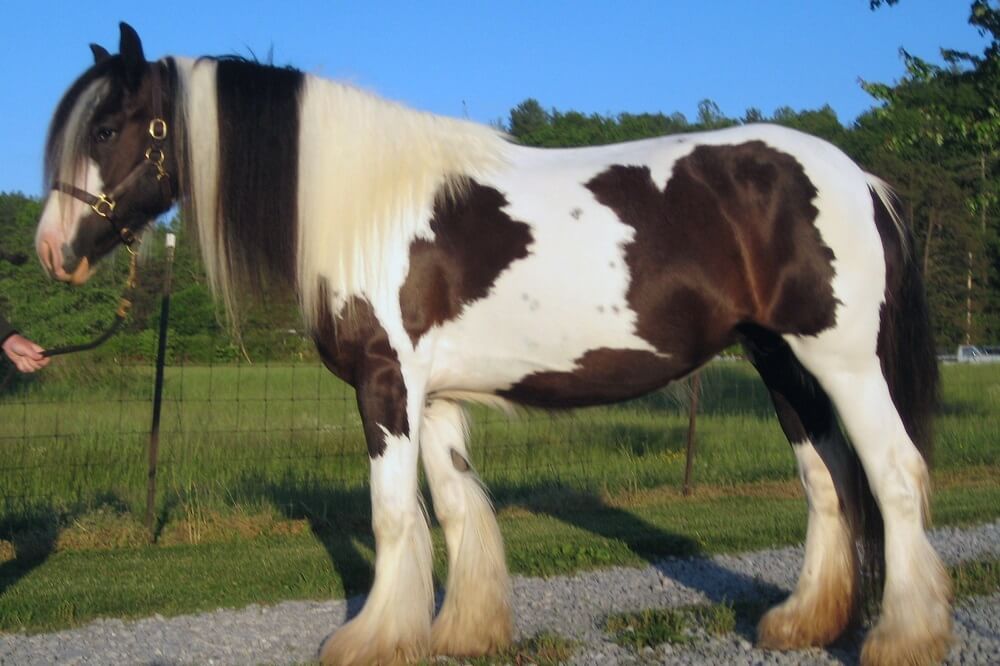
The Gypsy Vanner, also known as the Gypsy Cob, is 1 of Irish horse breeds. It is a small, heavily- built equus caballus of cob and it is frequently skewbald or piebald. It is predominantly associated with the Romani and Irish gaelic travellers. The Gypsy Vanner comes in many colors, splash solid and tobiano.
Their distinguishing feature is the abundance of feathers from behind their knees, as well as a long free-flowing mane and tail. They stand at 14 to 15 hands and pose a temperament that is both engaging and friendly.
Originally bred to pull the Gypsy Carriage, these breed is at present being used in many disciplines. You'll see them pulling carriages and existence ridden in the dressage ring. Overall, they are wonderful family horses and are popular therapy breeds due to their gracious nature.
12. Irish Draught
The Irish Draught, unsurprisingly, originated in Ireland, where it was used mainly for pulling heavy loads on farms. References to this breed date back every bit far as the 18th century, when it was well established following convenance the Irish Hobby with Iberian breeds, Clydesdales and Thoroughbreds.
The Irish gaelic Draught was bred to be suitable for all circular piece of work, including both in harness and under saddle. Due to the standards of farm life a few hundred years ago, they also had to be economical to keep, and these horses are still considered "skilful do-ers".
An Irish Draught mostly stands between fifteen.2 and 16.three hands, and has a good, solid confirmation without being too heavy. They take kind, gentle characters and are not considered to be peculiarly "hot" to handle and work with.
These horses are used for riding, eventing, showing and hunting, and they brand fantabulous constabulary horses due to their considerable force and unflappable temperaments.
13. Haflinger Horse
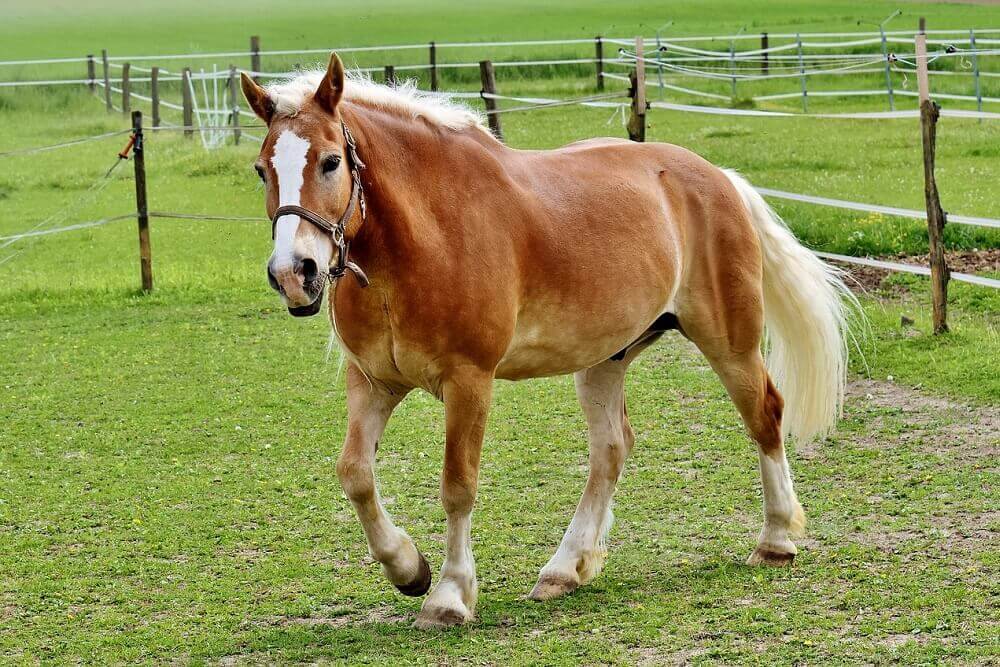
The Haflinger or the Avelignese is a blazon of horse breed found in northern Italia and Austria. In the tardily 19th century, the breed was small with distinctive gaits and a chestnut colour. Their current conformation and advent stems from an infusion of diverse European and the Arabian breeds.
Similarly to Fjord Horse, the Haflinger was mainly used in mountainous terrains due to their hardcore nature. They are all the same in use in High german and Austrian armies.
The breed is mainly chestnut in color, but it comes in other shades including light gold. The tail and mane are flaxen or white, and their summit has increased to an average of 55 inches. It features a refined caput and light poll with a medium neck. Information technology has pronounced withers, broad breast, and slopping shoulders.
The back is muscular, and the legs are clean with flat wide knees. The canter and trot are elastic and evidence a clear definition of ligaments and tendons. They are used in harness tasks, light draft and diverse under-saddle activities such every bit therapeutic riding, dressage and endurance riding among others.
xiv. Icelandic Horse
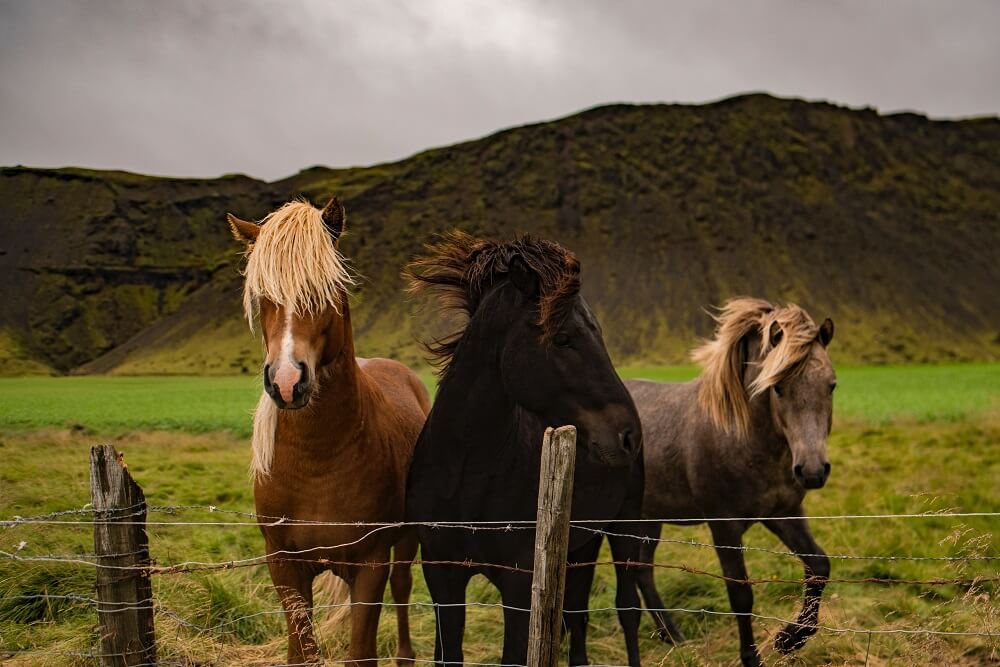
The Icelandic Horse is a descendant of the horses brought to Iceland by settlers over 11 centuries ago. In the early 1900s, these horses were used for travel and transportation purposes. In the 1940s, their function was coming to an end, but they have now been rediscovered and are used widely as sport and family horses.
The Iceland can be described as a rather small but sturdy breed. They weigh between 330 and 380 kilograms and stand an average of fourteen to 15 hands. The breed comes in many coat colors and patterns, including dun, black, gray, pinto, roan, palomino and anecdote.
They accept well-developed heads, with wide foreheads and straight profiles. Their necks are short and muscular while their chest is broad and deep. The legs are brusk and strong, and the mane and tail are filled with coarse hair. This brood is known to be hardy and an easy keeper.
15. Jutland Equus caballus

The Jutland horse gets its proper noun from the Danish peninsula of Jutland. This breed has been around since the middle-anile. The Jutland, as nosotros know it today, was formed effectually 1850 when Shire and Suffolk horses were infused with Danish horses.
These horses have a medium sized compact trunk with brusk sturdy legs and strong quarters. Their legs are heavily feathered. They accept gentle, expressive eyes, thick potent necks and long ears. Their shoulders are muscular, and their breast is deep and broad.
The overall impression i gets from looking at them is that of a stiff, sturdy animal. They weigh between 650 to 800kgs and stand up at an average of 15 to xvi hands. Some Jutlands are brown, only the majority are chestnut in color. This breed is docile and kind and is usually sued in agriculture and shows.
xvi. Knabstrupper Horse

The Knabstrupper/ Knabstrup is a Danish equus caballus breed that measures between 62 and 64 inches. There are besides pony-sized breeds of below 60 inches.
They have an unusual drove of glaze colors that range from solid to full leopard spotted hues and various variants in betwixt. Nevertheless, some are born with solid colors of chestnut and bay. The spots result from a genetic mechanism known as Leopard circuitous, which is also constitute in Appaloosa horses.
It was first adult in 1312 in Denmark where a solid-colored stallion and a chestnut mare with leopard complex markings were used by horse breeders to produce a filly with dramatic spots. Subsequently, the mare and her offspring were each bred with many other horses producing the Knabstrupper as a brood.
The horse does well in show jumping, dressage, circus, railroad vehicle and general riding. They are a brand in many European countries, Australia, Czech Republic and the United States.
17. Lusitano
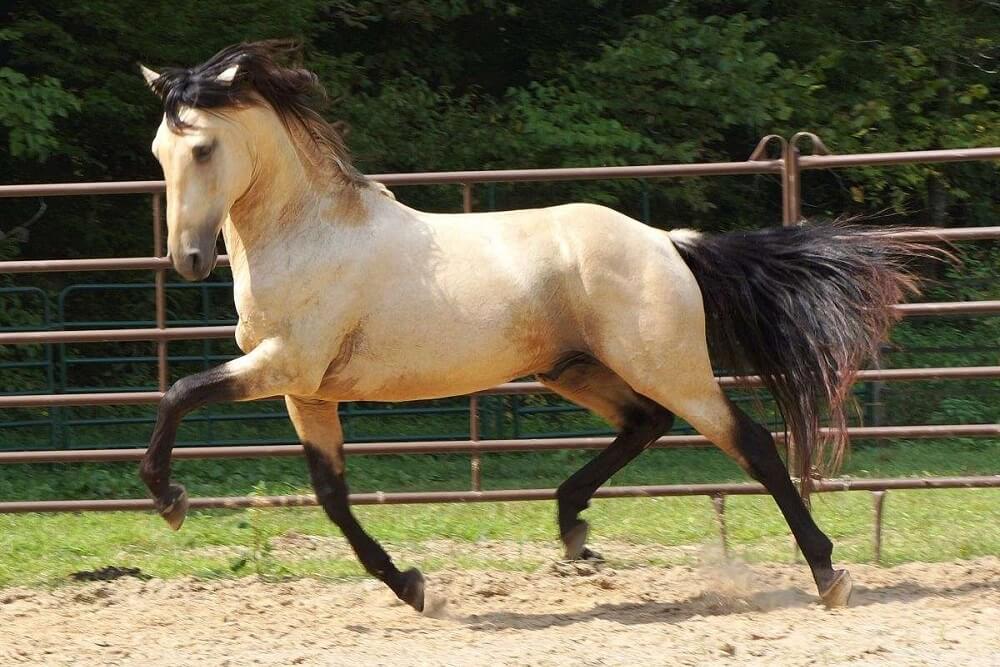
The Lusitano Horse is a type of horse brood establish in Portugal. This breed is very like to the Andalusian horses of Spain. The 2 breeds are thought to have a mutual origin, but the Lusitano has resulted in a more than rounded contour much like the Iberian horse while the Andalusian has adult a more oriental contour.
Their nearly distinguishing traits are a long head with a convex contour, narrowing to a curved nose, large conspicuous eyes inclined to an almond shape, a powerful neck with a tiny hairline giving off the impression of being upright, a short trunk with stiff shoulders, a deep rib muzzle, clean legs with potent bone support- the hind legs sited perfectly under the centrality, also as agile motility with a smooth, comfortable ride.
18. Marwari Horse
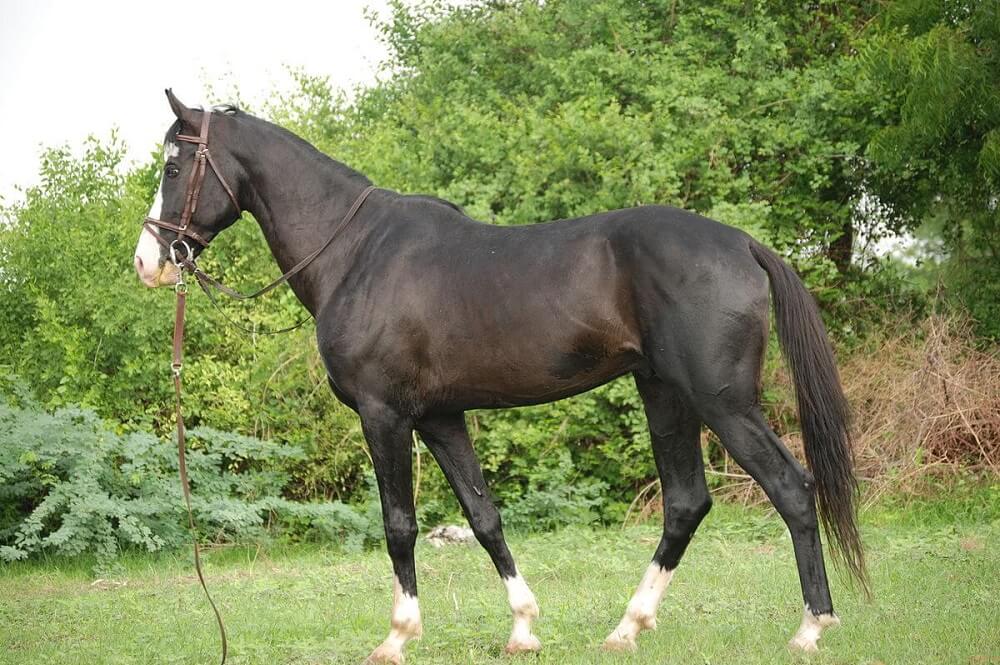
The Marwari /Malani is one of the rarest types of equus caballus breeds from the Marwari region of India. Information technology comes in all equine colors. The breed is like to Kathiawari brood and is known for its hardiness. It is between 58 and 62 inches alpine although horses originating from unlike parts of India tend to accept different heights.
The common colors are skewbald, piebald, white, palomino, chestnut, gray and bay. White horses are bred for religious reasons, only the grey ones are kept for their loftier value.
They take a straight facial contour with medium-sized ears that curve inwards. They tin rotate their ears to 180 degrees. Other features include broad athwart shoulders, deep chest, pronounced neck, sloping croup, long back, slender legs and small but well-built hooves.
They are easy keepers simply can besides have an unpredictable temperament. The breed is suited for sport, shows, horse safaris and formalism and religious purposes.
19. Morgan Horse

The Morgan equus caballus is among the earliest equus caballus breeds bred in the US. It was used a general riding animal and was also used for harness sporting during the American civil war. It has influenced many American breeds and was exported to other countries in the 19th and 20th centuries.
The breed features refined and compact breeds with chestnut, black or bay color coatings. It is known for its versatility and is used in many Western and English events.
The Morgan horse has stiff legs, a directly or slightly convex contour, an expressive head and a wide brow. The eyes are prominent while the tail is fastened high and gracefully straight. The back is curt with strongly-built musculus hindquarters.
They stand between 57 and 62 inches. They excel in endurance riding, dressage, western pleasure, prove jumping among other things. They take a gentle disposition and steady motion hence they are used in therapeutic riding programs.
twenty. New Forest Pony
The New Wood pony is a native pony breed from the isles of Britain. The breed is indigenous to New Forest in southern England, where horses have lived since the last ice historic period.
New Forest Ponies stand at an average 12.2 to 14.4 easily and come in many solid colors including chocolate-brown, bay and grey. Other mutual shades include chestnut, blackness and roan. They are well built with a slightly sloping shoulder which gives them a directly profile, making them perfect for riding and driving.
They have a shortish cervix and prominent head and almost accept not bad anxiety with strong hindquarters. They also accept a calm temperament making them ideal for most pony lovers and also one of the all-time equus caballus breeds for a first time owner.
21. Oldenburg Horse
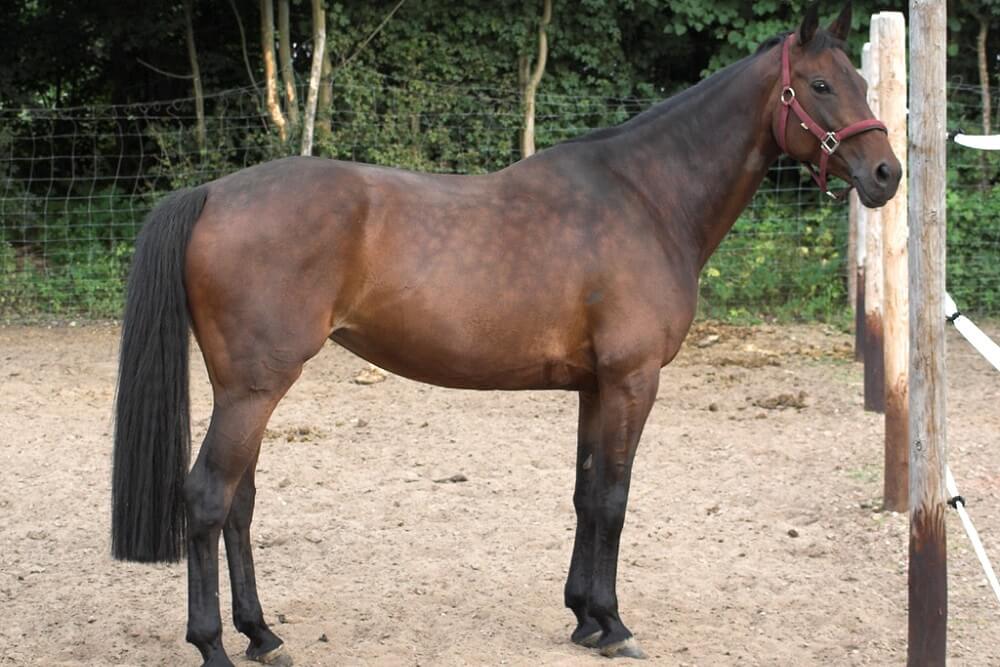
The Oldenburg is a type of warm-blooded horse brood from the western part of Lower Saxony. It was adult on a mare base of operations of an all-purpose railroad vehicle, though today they call it the Alt-Oldenburger.
The horses are alpine with proficient gaits and hopping abilities. They are known for their liberal pedigree requirements and are by and large kept for private utilize.
The appearance of an individual Oldenburg varies, and you are safer describing whatever warmblood by its actual parentage. The horse is known for producing the most modernistic types of riding horses characterized by long legs and expressive heads.
They are congenital uphill with long, moderately sloped pelvis and long necks. They stand between 64 and 70 inches.
22. Pigment Horse
The Pigment horse is a brood that combines the characteristics of a pinto with white and dark colors and a Western stock horse. Its development can be traced dorsum to the expedition of the Spanish Hernando, who travelled with one of the horses described as a pinto with white markings on his feet.
The other was a dark roan equus caballus with white patches on its trunk. These were the forebears of the Pigment Horses.
The Pigment Horses accept a singled-out body with a broad chest and strong, muscular hindquarters. Their glaze is a combination of white with an array of other colors common to most equines.
Their markings expect like splotches of paint over the horse'south body merely are actually divided into three categories: overo, tovero and tobiano – the three glaze patterns required to exist a Paint Horse.
23. Przewalski'southward Horse
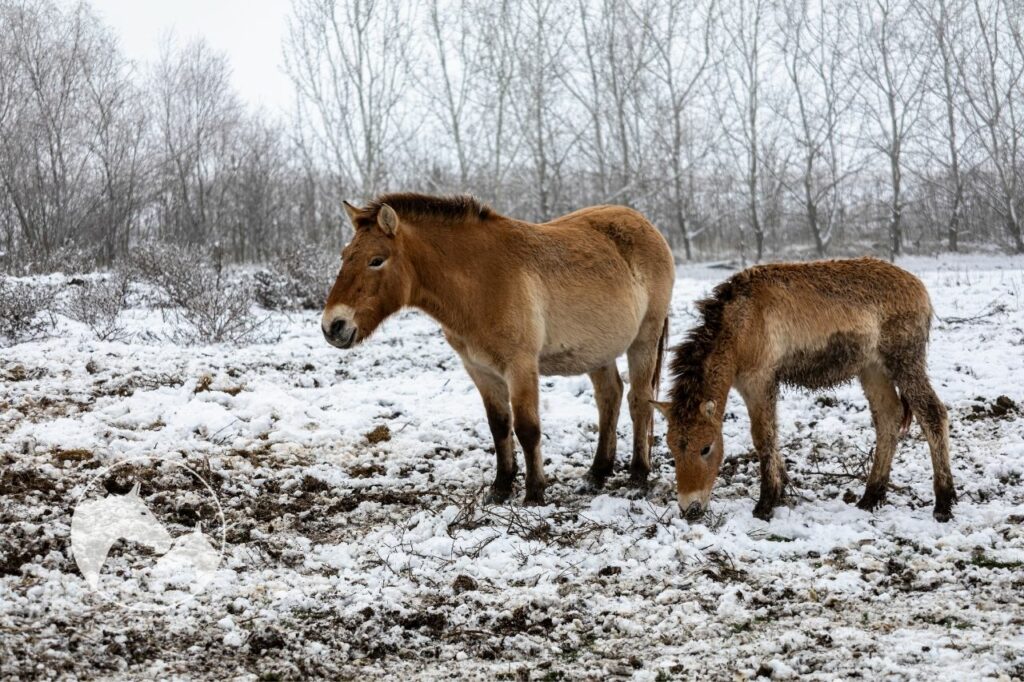
This wild equus caballus was one time functionally extinct in the wild, but thankfully information technology has been reintroduced. Native to the Steppes of Key Asia, the Przewalski's equus caballus is considered genetically unlike from modernistic horses, and it has long been thought that information technology is the merely remaining truly wild equus caballus.
This breed has come so perilously close to extinction that at 1 point in that location were only a handful of animals, in zoos. Thank you to careful convenance and rehabilitation, many Przewalski's have now been released dorsum into their native Mongolia.
These horses stand up betwixt 12 and 14 hands, and are all a yellowish dun colouring. Like many wild horses, they have "primitive markings" such every bit striped legs and a dorsal stripe. The feet are considerably harder and longer than other breeds, enabling them to navigate the rocky terrain of their homeland.
Przewalski's horses accept never been domesticated, then they exist in the wild as they have done for thousands of years. There is no "apply" for these horses, across reversing their critically endangered status, and encouraging the reintroduction of them into the wild, thus losing i less species to extinction.
24. Quarter Horse
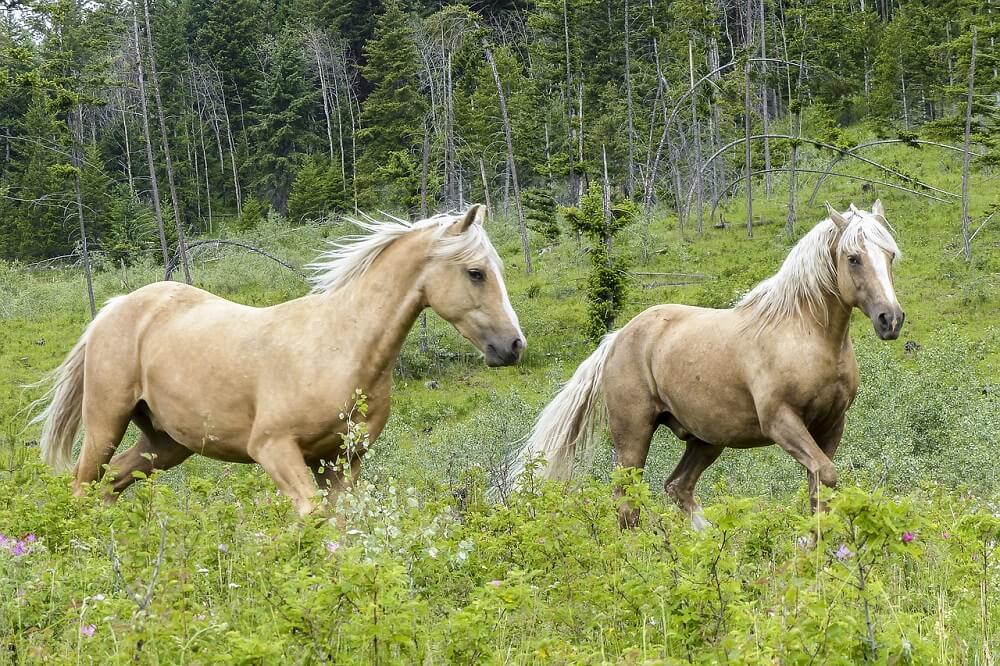
American Quarter Horse is the most owned horse brood in the U.s. today. This compact equus caballus breed with excellent, sensible temperaments came well-nigh through breeding between the Thoroughbred and "native" horses in America.
Quarter Horses are ordinarily a brownish red, or sorrel, color, however, many other colors are official recognized.
The American Quarter Horses are neat at racing (competing with Arabians and Thoroughbreds) with their name coming from their ability to beat other horses in ¼ mile races.
It is too a brood that has a stiff and natural instinct for piece of work with cattle. It was early on Quarter Horses that helped establishing the popular tradition of rodeo in the U.s..
25. Rocky Mountain Horse

The Rocky Mount Equus caballus is a blazon of horse brood developed in Kentucky, U.Due south.A. It originated from the Appalachian Mountains and not the Rocky Mountains.
A stallion named Old Tobe was used to produce the mod 24-hour interval Rocky Mountain Horses in the mid-20th century. The breed is known for its chocolate color coating and flaxen tail and mane.
Originally, it was a multi-functional riding and driving animal, but today it is pop in working cattle and trail riding. The boilerplate height is betwixt 58 and 64 inches.
They are known for their hardiness and ability to withstand extreme winters in mountain areas. They are too praised for their close similarity to humans.
26. Shire Horse
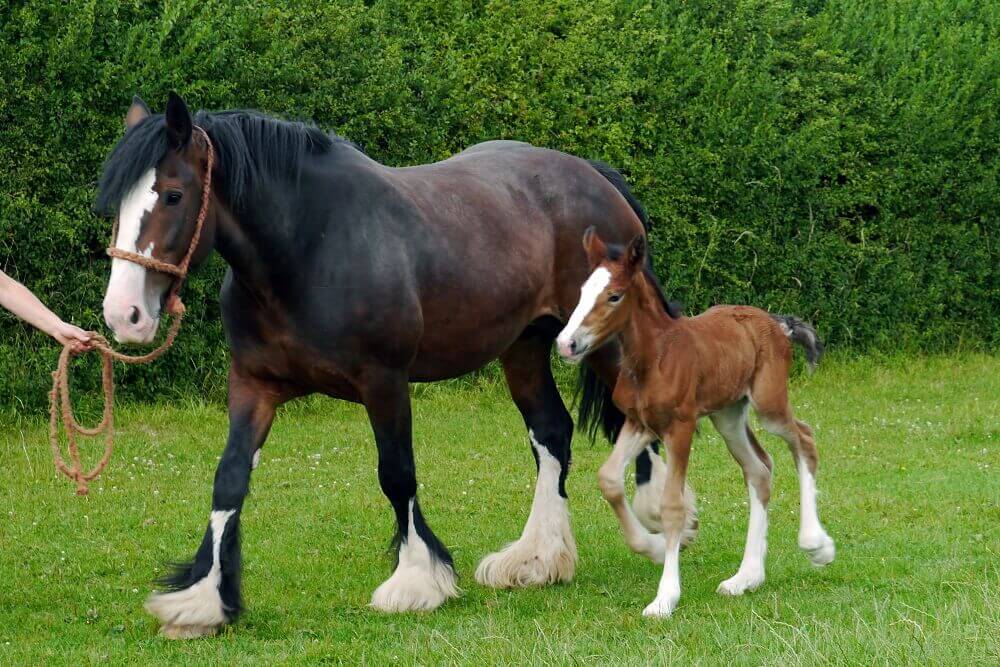
The Shire Horse has its roots in Britain. It is a breed of draught equus caballus that's usually gray, bay or black in colour. It is a alpine breed and has held the world record for being the largest and tallest horse for many years.
The breed has a great capacity for pulling weight and has been used to evangelize ale to clients. It has also been used for commercial promotion, riding and forestry. In the UK, the stallions are at least 68 inches when mature. The geldings are 64 inches.
Its boilerplate weight is almost 11000 kilograms. Its caput is lean and long with big eyes assault the cervix. The shoulder is deep and wide, the chest is broad, while the back is muscular and short with long and wide hindquarters.
They have minimal featherings on the legs and have cute, silky and straight hair. The shire horses have an like shooting fish in a barrel-going temperament just take a high adventure of suffering from chronic progressive lymphedema.
27. Tennessee Walking Horse
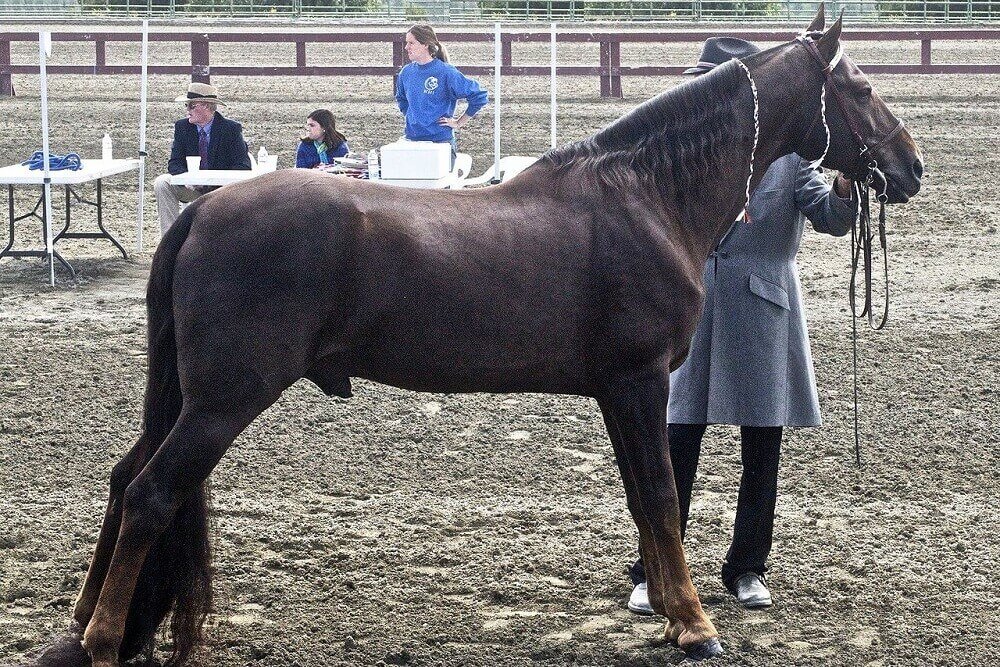
The Tennessee Walking Horse/ Tennessee Walker is a brood of the gaited equus caballus originally developed in the Southern Usa for use in plantations and farms. It is known for its unique 4-beat running and flashy move.
The modern breed is described as elegant, refined and solidly built. It features a long cervix, a well-divers caput, and modest ears. Its boilerplate meridian is betwixt 59 and 68 inches and weighs about 540 kilograms.
The back is short with a stiff coupling while the hips and shoulders are long and sloppy. The hindquarters are moderately thick and come in all solid colors and pinto patterns. The common colors include chestnut, blackness and bay. The designs include tobiano, sabino and avero.
The horse excels in trail riding activities both in Western and English language regions. They are common in movies, TV shows and street performances.
28. Vladimir Heavy Draft
The Vladimir Heavy Draft is a horse which originated from Vladimir, in the former USSR. It is a sturdy horse of medium size with an all-round draft. It was developed in the Vladimir province in the 20th century.
Today, this Russian equus caballus breed is found everywhere in the globe. Information technology is a quick maturing horse is pop for draft work.
The Vladimir Draft Horse has a big, long head, with a straight nose. Its ears are pricked forwards and its neck is long and strong with powerful shoulders. The back, even though, very wide, tin be weak.
The abdomen is tucked up and the croup is long with a distinct slope. The legs are brusque, while the hooves are round, wide and stiff. The chest is more developed and is very broad.
Information technology comes in a diverseness of colors, simply its nigh common colors are black and chestnut. These horses stand between 15 and sixteen hands and weigh an average of 1600 pounds.
29. Westphalian
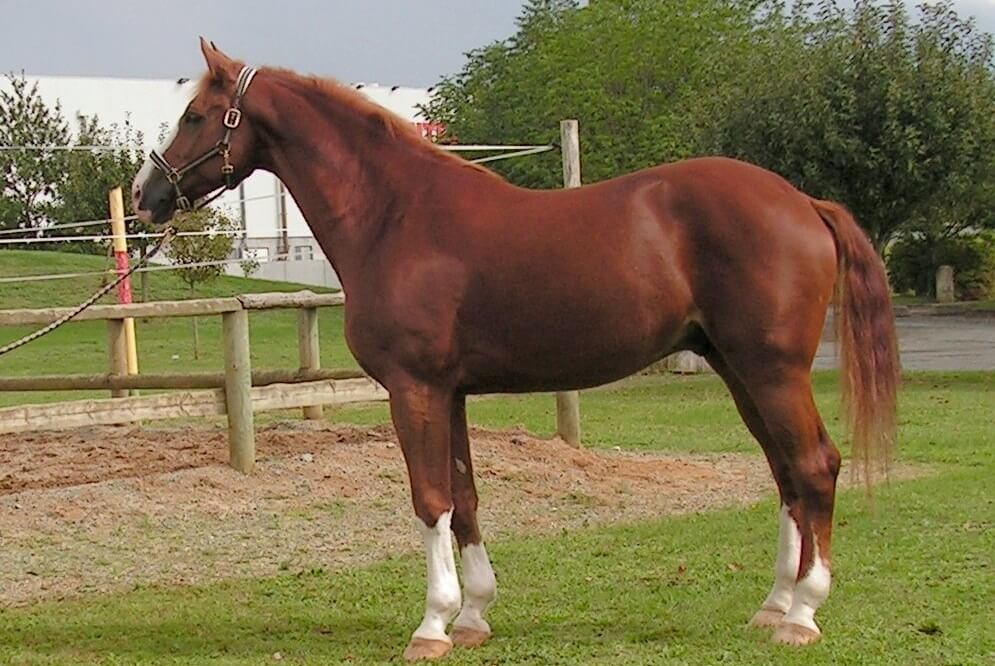
The Westphalian is a warmblood horse bred in the region of Westphalia in western Germany. Information technology is closely affiliated with the stud subcontract of Warendorf.
Since the second world state of war, this horse has been bred to the same standards as other German language warmbloods, and they are especially suitable for pleasure riding and competitive dressage.
The Westphalian does not discriminate on color, nevertheless, some shades such every bit chestnut, black, grayness and bay are rare. The all-time fashion to identify a Westphalian horse is past a make on their left hip – a shield containing alphabetic character "W" which the horses receive when they are awarded at foal shows.
Final Words
You haven't plant a horse brood yous were looking for? Permit united states know in the comments below or buy one of these swell books almost horse breeds.
Source: https://horsesandfoals.com/horse-breeds/
0 Response to "Breeds of Beef Cattle Arabian Horse"
Post a Comment